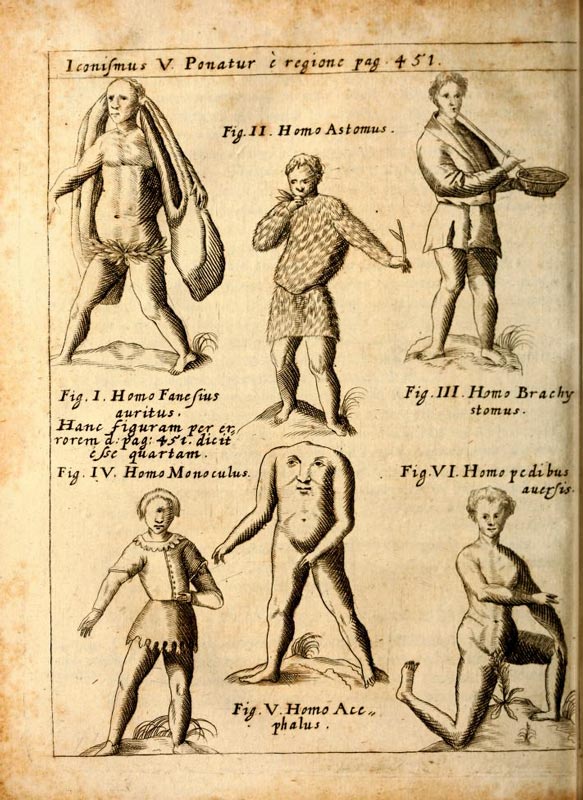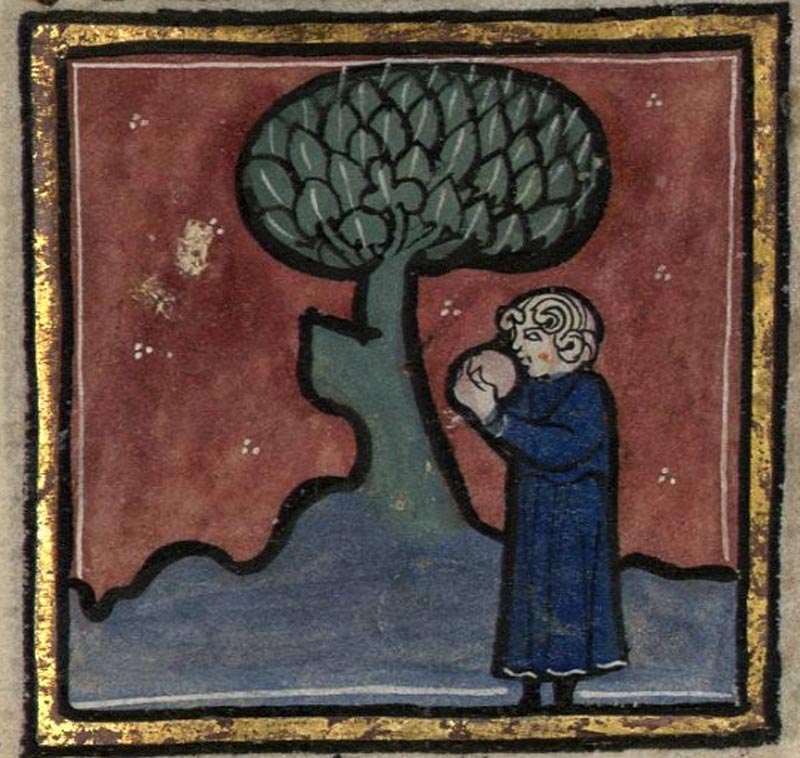Anthony’s Animals (original) (raw)

I decided to read Gustave Flaubert’s The Temptation of Saint Anthony due to the references to it in Lin Carter’s Kesrick. And it turns out that a lot of those references weren’t original with Flaubert either. They were both big on including stuff from other sources, which I totally get. In one sequence, Anthony sees a bunch of mythical animals, many of them hybrids, and a lot of which appeared in old bestiaries when hearsay was enough to be included in such books. When searching for some of them online, I found that A Book of Creatures covers most of them, and in pretty good detail as well. So you might as well just look there, especially since it has original illustrations, but I’m going to write a bit about them anyway.

At this part in the seventh chapter, the saint encounters first a Sphinx and a Chimera, then some Astomi, Nisnas, Blemmyes, Pygmies, Sciapods, Cynocephali, a Sadhuzag, Martichoras, Catoblepas, Basilisk, Griffin, and Unicorn.
These are the ones who get lines, anyway. There are several others mentioned, but I’m going to have to save them for a future post.
The Astomi are people, said to live by the Ganges in India (a lot of these beings were described as living in India, which was basically seen as the edge of the world by the ancient Greeks), who just smell things instead of eating. They have no mouths, and can also be killed by very strong scents.
The Nasnas, from Arabian folklore, is basically half a person, with one eye, one arm, and one leg.
For all of that, they still move around quickly. In an Arabian Nights tale, “The Story of the Sage and the Scholar,” the sage tricks people into thinking his student is a Nasnas simply by rubbing kohl on one of his eyes. They’re sometimes considered jinn, or at least half jinn, sometimes said to be the offspring of half-formed people called Shiqqs.
They’re sometimes said to be able to kill with a touch, but even if that’s not the case, they’re still pretty dangerous. That said, some people took to hunting and eating the Nasnas, and found their flesh surprisingly sweet. Blemmyae are people with no heads and faces on their chests, as seen on the cover art for Frank Black’s All My Ghosts EP.
Sciapods are the same as monopods, people with one giant foot each, and use them for shade as well as jumping around.
There are some of these in The Voyage of the Dawn Treader, although that wasn’t their original form. It fits the book’s theme of visiting strange lands with weird inhabitants.
I guess the Hoppers are also pretty similar.
The Sadhuzag is also known as the Shadhahvar, and a bunch of other similar spellings. And it’s sometimes called an Aras.
It has the body of a deer and the head of a goat, but is the size of a bull. It’s considered a unicorn, as it has a single horn, in this case one that’s long and hollow, with between forty-two and seventy-four antlers. When the wind blows, it produces music through the horn, pleasant when generated by the south wind, but terrifying when it’s from the north. Sources say that people would hunt Sadhuzags to take their horns, which were very valuable. Another musical animal Flaubert doesn’t mention, but is often combined or confused with the Sadhuzag, is the Siranis, although exactly what one of those is varies considerably from one description to another. The earliest sources refer to it as a sea creature with seven mouth openings and seven toes, which it used to play music. Later, it was said to be a land animal in Afghanistan, and the music was played by the wind blowing through its twelve nostrils. They’re carnivorous, and use the music to attract prey, which I suppose is why their name is derived from that of the Greek Sirens. The name has also been used to refer to the Qaqnus, a swan-like bird related to the Phoenix. Another fictional animal that I thought of when reading about these was the Musimon, a cross between a sheep and a goat that has the horns of both, and is used in heraldry.
I’ve seen indications that the animal was first described by Albertus Magnus, and the name just means “wild sheep.” That said, I do remember a short story an Oz fan wrote about a Musical Musimon, which had instruments instead of horns, and lived in Halidom. There really wasn’t much to the story; a lot of the ones distributed through that group were really just beginnings that didn’t go anywhere. But I did like that premise. There’s apparently also a kind of musical Digimon called Musimon. And that’s all for now, but I’ll get to the giant python that scared Moses sometime soon.